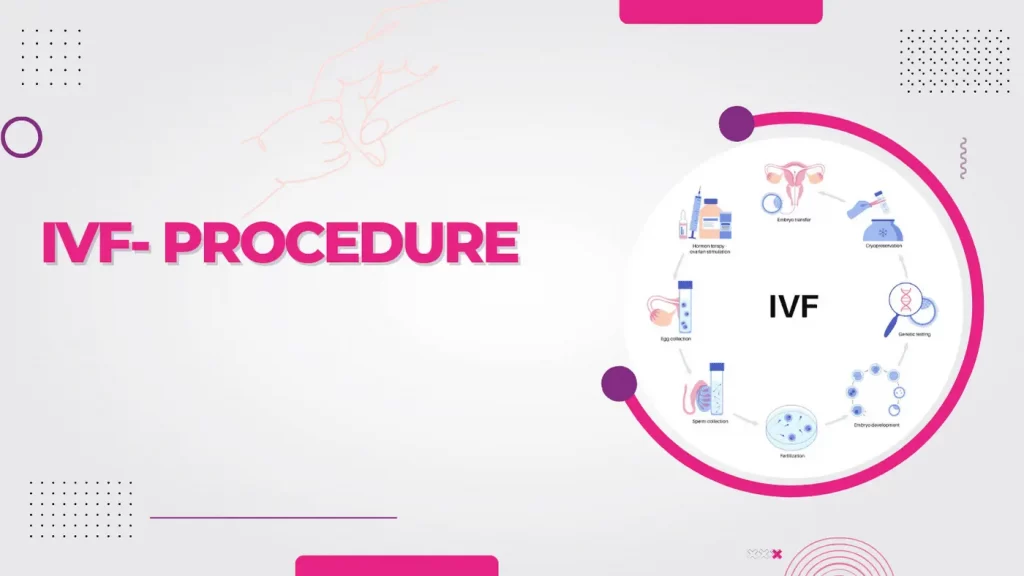
In-Vitro Fertilization, IVF, ( also called test tube baby) and Embryo Transfer is an assisted reproductive technology where eggs and sperms obtained from the intended couple are fertilized in the laboratory resulting in embryos which are placed inside the womb of intended mother to result in pregnancy.
Some of the Indications for IVF are:
- Blocked or flawed fallopian tubes
- Poor ovarian reserve, endometriosis, genital tuberculosis
- Women with ovulation advanced age, premature ovarian failure
- Male factor infertility including decreased sperm count.
- Individuals with a genetic disorder
- Unexplained infertility
- Repeated IUI failures
Following are five basic steps in the IVF process:
Step 1: Fertility medications and hormones are given to the woman for about 10 – 12 days which stimulates growth of multiple eggs in the ovary. Serial transvaginal ultrasound scans and hormone analysis is done to know the status of growing eggs.
Step 2: Once eggs are grown sufficiently, eggs are extracted through a minor surgical procedure under anesthesia that uses ultrasound to guide a hollow needle through the pelvic cavity to extract the eggs.
Step 3: The male partner’s semen is collected, processed and readied for IVF procedure.
Step 4: The sperms and eggs are put together in a dish and stored in laboratory to encourage fertilization. In certain cases where there is a lower possibility of fertilization, intracytoplasmic sperm injection (ICSI) can be used. In this procedure, a single sperm is injected directly into the egg in an attempt to attain fertilization. The eggs are monitored to ascertain that fertilization and cell division are taking place. Once this happens, the fertilized eggs are considered embryos.
Step 5: The embryos are usually transferred into the woman’s uterus three to five days after egg retrieval and fertilization. A catheter is used to transfer the embryos into the uterus. This procedure is usually painless for most women, although some women may experience mild cramping. After successful transfer of embryos, implantation takes place inside the uterus resulting in pregnancy which can be detected by blood tests after 16 days of embryo transfer.
The whole process of IVF takes place over 15 to 20 days. The procedure is mostly painless, safe and very effective in giving desired results of achieving pregnancy. Children born of IVF are as healthy as children born of natural pregnancies which has been proved in recent studies.